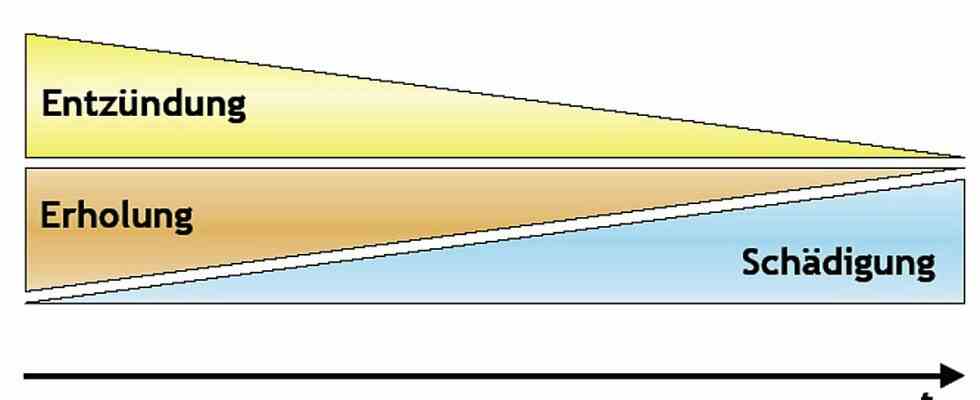In most cases, one steps multiple sclerosis initially in spurts. The relapsing, inflammatory part decreases, sometimes faster, sometimes more slowly, and is replaced by an increasingly “degenerative” phase without relapses. One also speaks of the relapsing-remitting and the secondary-progressive form of MS. However, the transitions are fluid.
It is very important that to this day the inflammatory part of MS can be slowed down much better with medication than the insidious degenerative part (even if there are more and more approvals for the insidious forms, see “Treating MS”). Here PIRA, after the English “Progression Idependent of Relapse Activity” as a term. In MS, PIRA refers to disease progression independent of relapse activity. The sooner a patient develops PIRA, the more likely it is that there will be permanent limitations and disabilities.
When does PIRA begin?
Symptoms within PIRA can be, for example, a gradual decrease in the ability to walk or increasingly poor walking, but also gradually occurring problems with attention, decreasing fine motor skills, gradually deteriorating trunk stability, etc. PIRA symptoms do not regress (in contrast to many symptoms in the in the course of a push).
A Spanish team of researchers wanted to find out whether such patients can be identified (and then treated appropriately) at the onset of the disease. In an extensive long-term observational study with data from 1,128 MS patients, who all presented to the MS center in Catalonia and were then regularly examined there, they analyzed many different parameters on the Beginning of MS (CIS) that could help predict the risk of PIRA in individual patients.
In summary, none of the parameters examined, apart from age at MS onset, had a clear influence on PIRA. The older the patient, the first MS suspect symptom were, the sooner they later developed PIRA. 31% of all patients examined experienced an “early” PIRA, ie the disease worsened independently of relapses within five years of the onset of the disease. The earlier PIRA occurs, the more likely it is that the disability will progress.
The researchers also differentiated between active and non-active PIRA based on whether T2-weighted lesions associated with PIRA occurred. This is particularly important for treatment, because there are more therapies available for secondary progressive MS with flare-ups than for purely progressive MS.
Important: age at onset of MS
That age has a major impact on a person’s progress multiple sclerosis has is not surprising. Conversely, it is known that the ability of the brain to regenerate decreases over time in all people. Fortunately, MS flare-ups in childhood or adolescence regenerate much faster and better than later. And, also for a long time: the sooner after the onset of the disease man with a disease-modulating therapy experience shows that the transition to the secondary-progressive phase occurs later.
Whereby PIRA and the secondary progressive phase are not to be equated. Insidious deterioration of MS can be experienced alongside relapses, i.e. still in the relapsing phase. Or. a distinction has long been made between a secondary progressive phase with and without patch flare-ups. The process should be thought of as a gradual replacement of the inflammatory relapsing phase by a slowly progressive phase.
However, scientists around the world continue to search for risk factors and parameters that give the individual patient a more precise diagnosis forecast of its course and thus enable the best possible treatment. Biomarkers also play a role here.

